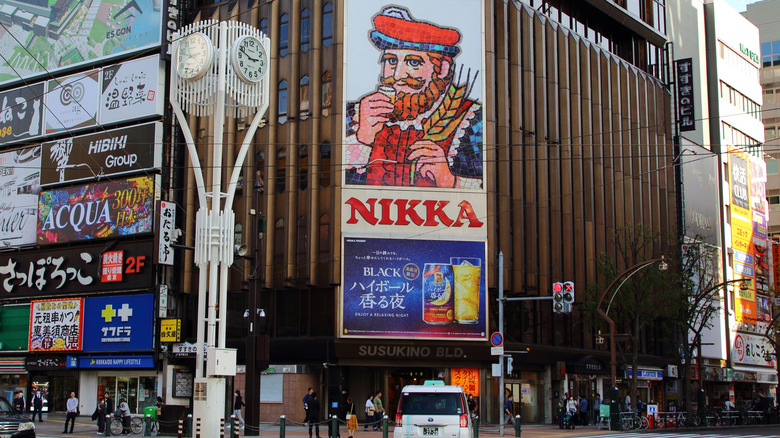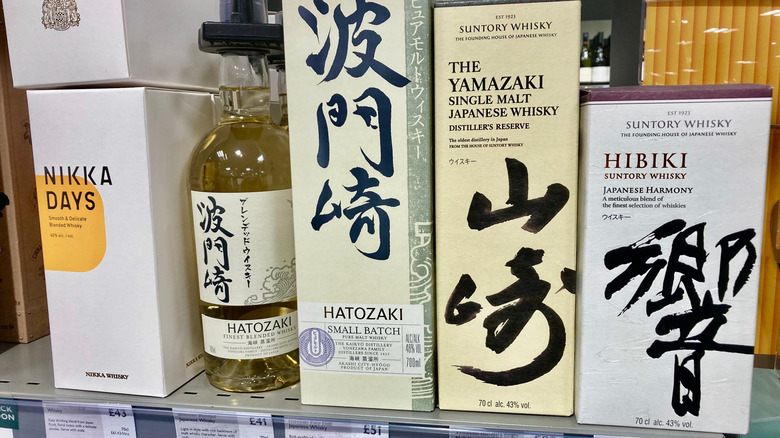Taste Experts Declared This Asian Country's Famously Smooth, Flavorful Whisky Even Better Than Scotland's
Ask a Scotsman and they'll say the best whisky destinations are all in Scotland. Or are they? In a shocking revelation from the 2024 tasting event that's come to be known as the Judgment of Glasgow, some of the most important names in the whisky world came together in the most underrated destination in Scotland, according to Rick Steves, for a blind tasting of Scotch and Japanese whiskies. Scotland's finest were compared against some of Japan's best, and in a result that surprised all (but tasted no less spectacular), the judges favored Japan in three out of five categories. Scotland held down both the blended whisky and "wildcard" categories, while Japan won for single malt under £100, single malt over £100, and whisky highball.
The event was compared to the 1976 Judgment of Paris, when American wine won out in a competition against the French, finally forcing the Old World to acknowledge the advancement of New World makers, who had learned their trade from European winemakers. It was a moment in which the student became the master, so to speak — a pattern which has now repeated itself in the whisky world.
While many whiskies have been made throughout the last few centuries — it's debated ad nauseam whether Irish whiskey or Scotch came first, and American bourbon and rye are in a class of their own — no whisky outside Scotland so much emulates the Scotch style and disposition as Japanese. Masataka Taketsuru, known as the "Father of Japanese Whisky," learned his craft in Scotland with the goal of replicating its superior quality in his homeland. As in most things, the Japanese studied Scotch methodology until they perfected it themselves, creating a smooth and refined golden nectar. And now, it seems, they've conquered their predecessors when it comes to taste.
What makes Japanese whisky on par with Scotch
The first makers of American and Canadian whisky — among the largest New World whisky categories — were Irish and Scottish immigrants who modeled their own production off of methods handed down by their forefathers. But their styles varied drastically, particularly in their choice of grains and climate. American whiskeys were created out of necessity and to be affordable on the local market. Masataka Taketsuru, on the other hand, began with the intent of creating a premium product.
These days, Japan's distilleries have grown to the point that connoisseurs have begun to pick up on regional differences, in the same vein as regional styles of Scotch (i.e., Highland, Lowland, Islay, etc.). Hokkaido, to the north, has a climate most like Scotland's, while on the main island of Honshu, distilleries favor regions like the Japanese Alps in Chubu, innovative Kanto (surrounding Tokyo), and, to the southwest, subtropical Kyushu. And like Scotland, Japan is also revered for the purity and cleanliness of its spring and mountain water, a distinctive ingredient in any spirit production.
Japan has fewer rules and constraints in how its whisky is made, meaning there's more room for experimentation and innovation. Distilleries tend to create brighter, more nuanced whiskies, or even ones with umami flavors, and it's worth keeping an eye on where Japanese whisky is going in whole. However, following its win over Scotch in 2024's tasting, the Scots and the Japanese both ought to keep their guard up against this unexpected island that's the latest hotspot for world-class whisky, lest next we're hearing of the Judgment of Osaka.

